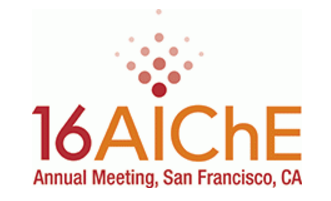Villanova Engineers Present at National AIChE Conference

Villanova University will be well represented at the 2016 AIChE—the American Institute of Chemical Engineers—Annual Meeting in San Francisco. Six Chemical Engineering faculty members and one doctoral student will deliver presentations on a variety of topics.
In the Sustainable Engineering Forum, Associate Professor Justinus Satrio, PhD, and Research Associate Professor Charles Coe, PhD, will present “Effects of Feedstock on the Product Yields and Selectivity of Lignocellulosic Biomass Pyrolysis Using HZSM-5 Catalyst.” Drs. Satrio and Coe will explain the study’s experimental results, which indicate that biomass feedstock has a significant effect on pyrolysis product yields and selectivity, as well as on the catalyst activity. Research work reported in this presentation is funded by the US Department of Energy through their Biomass Research and Development Initiative (BRDI) program.
Associate Professor Michael Smith, PhD will present “Transport Lite: Teaching Transport Phenomena through Application-Driven Inquiry in the Brewing Process.” He will describe how he abandoned the traditional approach for what was a relatively unpopular course, and adopted an applications-based approach that has generated great interest. This presentation is part of a session on Graduate or Special Topics Courses: Course Development and Best Practices.
In the Food, Pharmaceutical and Bioengineering Division, Assistant Professor Jacob Elmer, PhD, will present “Enhancement of Gene Therapy via Inhibition of the Innate Immune Response.” He will address the innate immune response as a significant obstacle in the development of gene therapy techniques, and will offer several different strategies to improve non-viral gene therapy by inhibiting the innate immune response.
In addition, at the Translational Medicine and Bioengineering Conference prior to the AIChE meeting, Dr. Elmer will present “Evaluation of Invertebrate Hemoglobins as Novel Blood Substitutes.” He will describe the results of his research, which suggests that invertebrates like worms, leeches, clams and snails may provide a safe and effective blood substitute that is stable enough to be deployed in remote areas where donated blood is unavailable.
Assistant Professor Zuyi “Jacky” Huang, PhD, and third year PhD student Xianhua Li will present “Educate MATLAB in Chemical Process Control Using Flipped-Classroom Modules,” which will explain how the flipped-classroom approach facilitated students’ knowledge of process modeling and control techniques, and improved students’ MATLAB Simulink skills for chemical processes. The flipped-classroom modules have been published in the journal Education for Chemical Engineers and Dr. Huang has received several requests from faculty in the United States and United Kingdom to share the examples and videos developed in this project.
Assistant Professor Rees Rankin, PhD, will deliver two presentations, both in the Computational Molecular Science and Engineering Forum. The results of his work on “Effects of Surface Structure and Fluorination on Electronic Structure of GaCl4 in BETS2‐GaCl4 on Silver Surfaces” will provide insight on the degree to which modulation of nanoelectronic materials electronic structure can be varied. In “DFT Calculations of Multi-Coverage and Phase Adlayer Structure of Tryptophan on Cu(111),” Dr. Rankin will present results of DFT (density functional theory) calculations, in conjunction with recent experiments via STM (scanning tunneling microscope), to characterize the structure of low to moderate to high coverage adlayers of the amino acid tryptophan on Cu(111) surfaces. Current results indicate that long held assumptions about the tri-dentate chiral bonding motif footprint for amino acids on copper surfaces may be situationally dependent.
Finally, in “A Systems-Biology Approach to Investigate the Antimicrobial Activity of Oleuropein,” doctoral student Xianhua Li, advised by Dr. Huang, will present the first genome-scale model for oleuropein metabolism study, looking at the olive phenolic compound’s antimicrobial effects on a variety of bacteria and fungi. In recent years there has been considerable interest regarding the use of natural antimicrobial agents as food additives to inhibit the growth of food pathogens. Li’s study indicates that genome-scale modeling is a promising method for revealing the intracellular metabolisms of oleuropein biological properties, thus helping to find its food and pharmaceutical applications.
Co-chair of the conference’s Computational Methods in Biological and Biomedical Systems section in which Li is presenting, Dr. Huang reports that fewer than half of the submitted abstracts were accepted for presentation. He says, “Xianhua did an excellent job in her research,” and adds that Chemical Engineering seniors Virginia LaMacchia and Kathryn O'Donoghue also contributed to the work. Their research has been published in the Journal of Industrial Microbiology and Biotechnology.
Abstracts for each of these presentations can be found on the AIChE website at the links provided.
